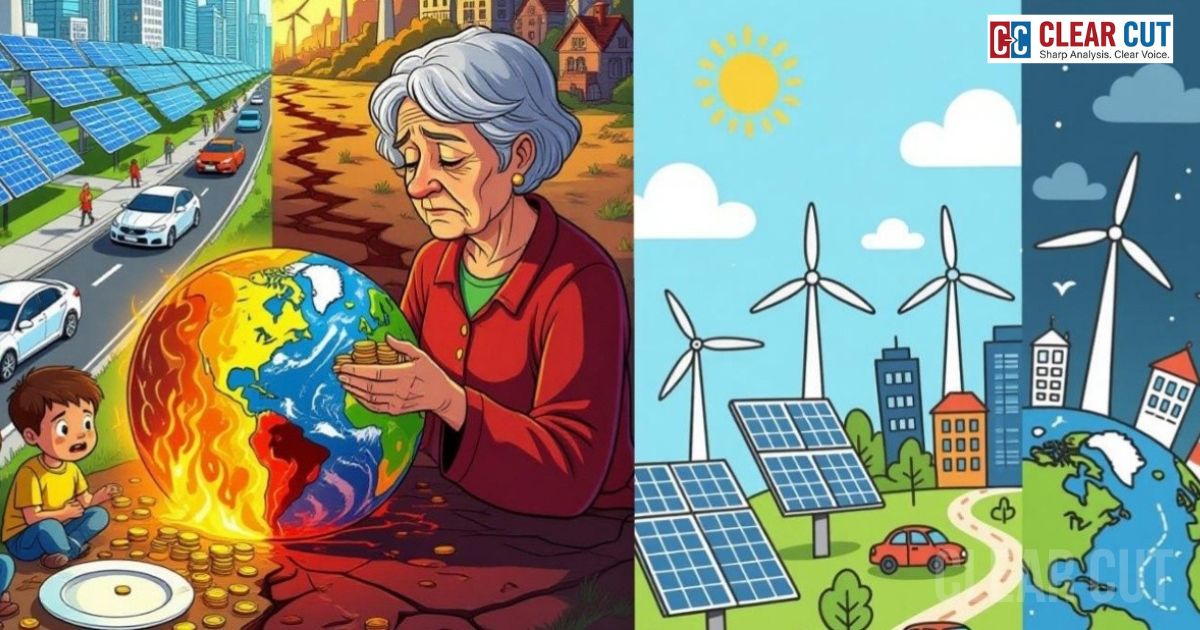Photo Credit: Antara Mrinal
Clear Cut Education Desk
New Delhi, UPDATED: Aug 29, 2025 02:52 IST
Written By: Antara Mrinal
In the realm of international development, the Social Development Goals (SDGs) are highly regarded. Some indicators of the progress that SDGs are making are positive and still, some are stagnant. This highlights where research, policy, and funding are making progress and where the supply and demand do not meet.
Improving SDG Metrics
One of the most important indicators of progress is the rising health outcome. As the UN’s SDG reports of 2025 reveal, new HIV infections are down almost 40 percent since 2010. As of 2020, malaria control efforts have averted approximately 2.2 billion cases and saved about 12.7 million lives (United Nations). Access to the most basic and fundamental services like electricity have surged to 92 percent of the world’s population by the year 2023. The internet is a versatile tool used to fulfill educational, occupational, and civic responsibilities. The proportion of internet users in the world rose from about 40 percent in 2015 to almost 68 percent in 2024 (United Nations). Educational attainment is improving in several areas too. Since 2015, the number of children and youth of school age who are in school worldwide, has increased by more than 100 million. Completion rates in primary and upper secondary education have risen in many regions, including large improvements in primary school completion (World Economic Forum).
Social protection systems have made great strides. Protection now spans across more than half of the global population, compared to a decade ago. This development is helping cushion the shock of vulnerable populations against poverty, loss of income, and health crises (sdgtalks EN).
Where Gaps Are Growing and Progress Is Decelerating
The picture is not all rosy, and some aspects are genuinely alarming. The worrying trend of extreme poverty is one of these: more than 800 million people across the globe live under extreme conditions, and without action, nearly 9% of the population is predicted to remain this way by 2030 (United Nations). The rise in hunger is equally concerning. As of 2023, for every eleven people, one was hungry, and over 2 billion people were classed as being in moderate to severe food insecurity. Even with investments in agriculture, food prices remain exorbitantly high, some 300% of pre pandemic levels in many countries, and children are unable to achieve the minimum dietary diversity (World Economic Forum). The picture is similarly mixed when looking at education. While a great number of children are in school, 272 million children and youth worldwide were out school as of 2023. This is even more alarming in low-income countries, where the percentage of school aged children out of school is significantly greater than in high income countries (World Economic Forum).
Fulfilling gender equality and sustainability goals remain some of the most unexplored areas of research work. Women continue to shoulder a disproportionate amount of unpaid care work. Legal reforms are under and being implemented, yet progress remains a crusted inch. As far as the world’s ecosystem is concerned, there are still major unfulfilled points in the life under the water sector, climate adaptation, ecosystem protection, as well as in the renewable energy sector (Journals of India). Lastly, lack of “data and measurement gaps,” is a major hindrance. For instance, gender- disaggregated SDG data jeopardizes full accuracy and availability. Current trends predict gaining full SDG gender data will be a reality in the 2040s for some countries, well beyond the 2030 goal, and is a substantial SDG gender data gap (UN Women).
Research Outputs
Research studies mirror these patterns of progress and stall. A recent analysis covering more than 49 million publications finds that health-related research (SDG 3: Good Health and Well being) has absolute dominance: nearly 58.3 percent of SDG-tagged publications are related to health. Climate action (SDG 13) is below 9 percent. Meanwhile, low and middle income countries account for about 5 percent of the scientific output on SDGs in comparison to several major countries (US, China, Germany, UK) (MDPI).
Another study focusing on inequality, poverty, and climate change confirms that the connections between them remain largely unexplored. Although more than half the documents in that review were related to the environment and economics, the direct linkages to poverty, inequality, and climate change vulnerability, as well as policy frameworks, remain extremely underdeveloped. In the Asia-Pacific Region, there has been significant improvement in the application of the SDG indicators in Voluntary National Reviews (VNRs). From 2016 to 2023, there was a striking increase in the availability of indicators and their integration within VNRs. A number of countries enhanced their statistical capacities and started utilizing national SDG trackers or dashboards. However, despite the increasing availability of data, many indicators that are not disaggregated (by sex, disability, geography) impede effective policy-making for the most disadvantaged.
Why These Divergences Matter
These mixed trends are not only about the statistics. Where indicators improve, and there is corresponding research, lives are tangibly better – fewer children die, more children go to school, and health systems function better. Where there is a lag in indicators, the situation is stark and real: hunger, disease, lack of educational opportunities, and deep-rooted inequality.
There appears to be an abundance of research on technology and renewable energy without an equivalent effort to address poverty, inequality, environmental degradation, and policy frameworks at the grassroots level. This indicates that there is a disparity between the globally recognized areas of research funding and its institutional priorities. There is an especially critical gap within less developed countries.
Bridging the Chasm
To ensure that rising trends aren’t outweighed by widening gaps, several shifts are needed. Funding bodies must explicitly prioritize research in lagging SDG areas such as poverty and inequality, clean water and sanitation, and climate justice. National policy frameworks should require disaggregated quantitative and qualitative data collection and research to expose inequities that are masked by aggregate estimates. Bridging other disciplines is sorely needed, especially in research that combines health, environment, economics, gender, and indigenous/local expertise in addressing multilayered vulnerabilities. Policy and social innovation, community-based development, and social practice should be as, if not more, eligible than advanced technology to be funded and published by journals, universities, and research funding bodies. As more data are generated, transparency about the processes, especially context and frame-setting and policymaking, becomes critical. Disparities in indicators and disparity resource distribution and collection mapped or imagine data frameworks, especially in set policymaking second decade developmental targeted efforts, lead to misdirection, underinvestment, or misplaced policy efforts.
A Tenuous Path Toward 2030
The progress for SDG is not uniform across regions. Certainly, there are some major accomplishments, like extending access to electricity, improving health indicators, and increasing school enrollment, but there are also difficult and worsening problems related to hunger and poverty, clean water access and its protection, and the environment, as well as disparities and opportunity. Research and innovation follow some of the victories but lag behind in others, leaving many of the world’s most vulnerable still unreached. The world is already behind schedule and starting to lose momentum. It is critical to achieve more. This progress must be bold and well-informed, with central, agile, and equitable institutions tailored toward vulnerable populations. Only then can science achieve positive global impact.




